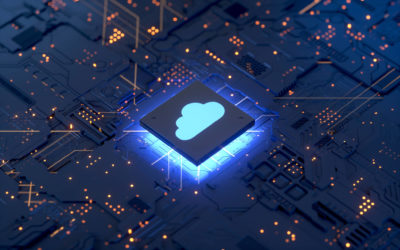Why Let Device Constraints Constrain Your Business Potential?
19
October 2020
by Eliav Gnessin
Solving with Firmware Innovation
Embedded computing devices deployed within the Internet of Things (IoT) have, for years, been challenged with the ability to compute given minimal resources.
Constraints include memory and processing capabilities and the low-power radio standards utilized as network interfaces.
Product companies and Solution providers need inexpensive computing devices at scale – not just a few dozen, but tens of thousands and even hundreds of thousands that are small, affordable, and reliable, especially for distributed implementations (for example, an entire smart city using controlled LED lighting).
The ability to network embedded devices opens up endless opportunities to develop new applications in homes, buildings, and public spaces. The value of the IoT is found in new computing services that integrate existing software services already available via the Internet with the control and data gathering capabilities of embedded devices.
Technology improvements following Moore’s law (the value of the network is based on the number of endpoints on the network) are making embedded devices more economical, smaller and more energy-efficient but not necessarily more powerful. Mass adoption equals mass production, which has contributed greatly to the growth of the IoT and Industrial IoT.
The challenge today, however, are expectations for edge devices to do a lot more work than they have previously done, and that takes more CPU power, memory, and storage capacity.
The rapid advancement and roll out of 5G wireless IoT services are exacerbating the challenge while also opening up new innovation opportunities – the networks will be amazing, but what about the edge? How do we create devices that are both powerful and resource-efficient, rugged, and affordable?
Embedded devices used in the IoT need to possess computational capabilities for the task they must perform, security, and networking abilities allowing integration with the Internet. To minimize product costs, IoT devices are to be equipped with low-power, constrained resources, combined with a production-grade, low-footprint IoT client that allows utilizing the full capabilities of the chipset.
Similar Blogs
Plug and Play Grows in Popularity on the Azure IoT Marketplace
Microsoft Azure is becoming increasingly popular among IoT developers as a platform for creating then scaling new applications. With services including IoT Central, IoT Hub, IoT Device Provisioning Service and IoT edge, Azure IoT uses the Lambda Architecture pattern, designed for the Internet of Things (IoT) and other Big Data systems that need to process data in near real-time, in addition to data storage and batch processing.
Small But Powerful IoT Gateways Come of Age
IoT gateways have been fundamental to early IoT architectures, but as we continue to move closer to the edge, and compute more at the edge, gateways need to evolve. For IoT edge deployments, gateways also need to be more affordable, and more easily integrated into the physical world where space is at a premium.
The True Potential of IoT: Improving Lives, Saving Lives, Accelerating Sustainability
Cloud of Things, the ready-to-run IoT solution provider, today announced the availability of DeviceTone Suite on the Microsoft Azure Marketplace, an online store providing applications and services for use on Microsoft Azure. Cloud of Things customers can now take advantage of the productive and trusted Azure cloud platform, with streamlined deployment and management.



